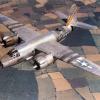-
Posts
17,765 -
Joined
-
Last visited
-
Days Won
282

Marauder replied to Jim Peace's topic in Vintage Mooneys (pre-J models)

Marauder replied to Moonbat's topic in Vintage Mooneys (pre-J models)

Marauder replied to Derrickearly's topic in Vintage Mooneys (pre-J models)

Marauder replied to Jim Peace's topic in Vintage Mooneys (pre-J models)

Marauder replied to Jim Peace's topic in Vintage Mooneys (pre-J models)

Marauder replied to Marauder's topic in Vintage Mooneys (pre-J models)

Marauder replied to Marauder's topic in Vintage Mooneys (pre-J models)

Marauder replied to Bob_Belville's topic in Vintage Mooneys (pre-J models)

Marauder replied to Bob_Belville's topic in Vintage Mooneys (pre-J models)

Marauder replied to RobertE's topic in General Mooney Talk
We have placed cookies on your device to help make this website better. You can adjust your cookie settings, otherwise we'll assume you're okay to continue.